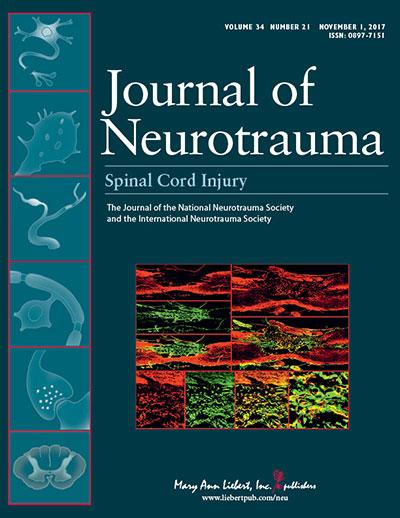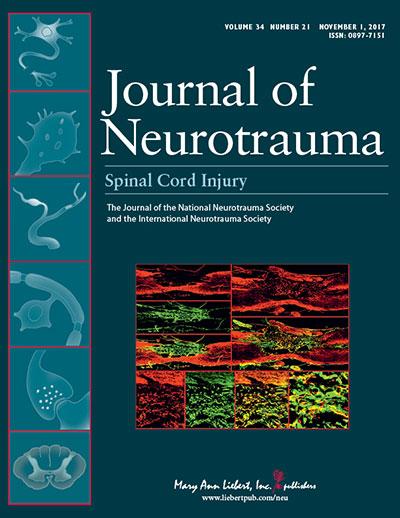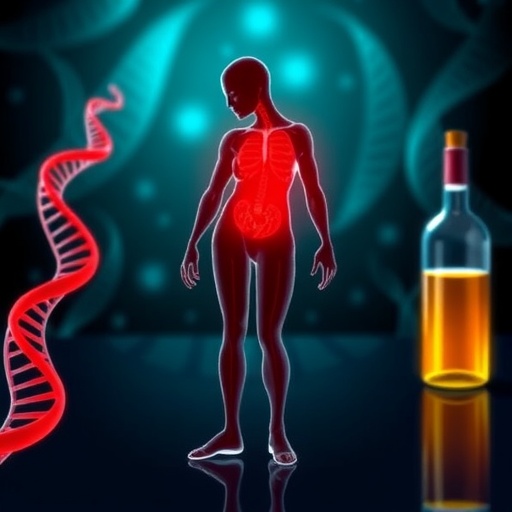
Credit: Mary Ann Liebert, Inc., publishers
New Rochelle, NY, Nov. 6, 2017–Researchers have shown that some of the critical pathophysiological responses to traumatic spinal cord injury (SCI), evidence of insufficient oxygen levels and metabolic stress that can permanently damage tissue, persist for at least a week post-injury at and extending away from the injury site in a large animal model. Evidence demonstrating hemodynamic and metabolic changes up to day 7 in a minipig model of traumatic SCI are reported in a new study published in Journal of Neurotrauma, a peer-reviewed journal from Mary Ann Liebert, Inc., publishers. The article is available free on the Journal of Neurotrauma website until December 6, 2017.
Brian Kwon and coauthors from University of British Columbia, Vancouver, suggest that the common clinical practice of providing patients with traumatic SCI with hemodynamic support out to 7 days post-injury may not be sufficient to prevent ischemia-related damage to the injured cord. In the article entitled "Changes in Pressure, Hemodynamics, and Metabolism within the Spinal Cord during the First 7 Days after Injury Using a Porcine Model," the researchers present the results of analyzing the lactate/pyruvate ratio (a measure of metabolic activity), blood flow, oxygenation, and hydrostatic pressure at and near the site of traumatic SCI in minipigs. The findings indicate that the post-injury changes tended to continue and sometimes worsen over days 2-7, even at measurement sites farther away from the injury.
"This is an important paper reporting on preclinical findings using a large animal model that could impact how physicians manage SCI patients," says W. Dalton Dietrich, PhD, Deputy Editor of Journal of Neurotrauma and Professor, University of Miami Miller School of Medicine, Miami, Florida. "The results indicate that providing hemodynamic support to SCI patients for a restricted period may not be optimal to protect against posttraumatic injury mechanisms."
###
About the Journal
Journal of Neurotrauma is an authoritative peer-reviewed journal published 24 times per year in print and online that focuses on the latest advances in the clinical and laboratory investigation of traumatic brain and spinal cord injury. Emphasis is on the basic pathobiology of injury to the nervous system, and the papers and reviews evaluate preclinical and clinical trials targeted at improving the early management and long-term care and recovery of patients with traumatic brain injury. Journal of Neurotrauma is the official journal of the National Neurotrauma Society and the International Neurotrauma Society. Complete tables of content and a sample issue may be viewed on the Journal of Neurotrauma website.
About the Publisher
Mary Ann Liebert, Inc., publishers is a privately held, fully integrated media company known for establishing authoritative peer-reviewed journals in promising areas of science and biomedical research, including Therapeutic Hypothermia and Temperature Management, Brain Connectivity, and Tissue Engineering. Its biotechnology trade magazine, GEN (Genetic Engineering & Biotechnology News), was the first in its field and is today the industry's most widely read publication worldwide. A complete list of the firm's 80 journals, books, and newsmagazines is available on the Mary Ann Liebert, Inc., publishers website.
Media Contact
Kathryn Ryan
[email protected]
914-740-2250
@LiebertPub
http://www.liebertpub.com
Original Source
http://www.liebertpub.com/global/pressrelease/new-study-finds-widespread-consequences-after-traumatic-spinal-cord-injury/2284/ http://dx.doi.org/10.1089/neu.2017.5034





